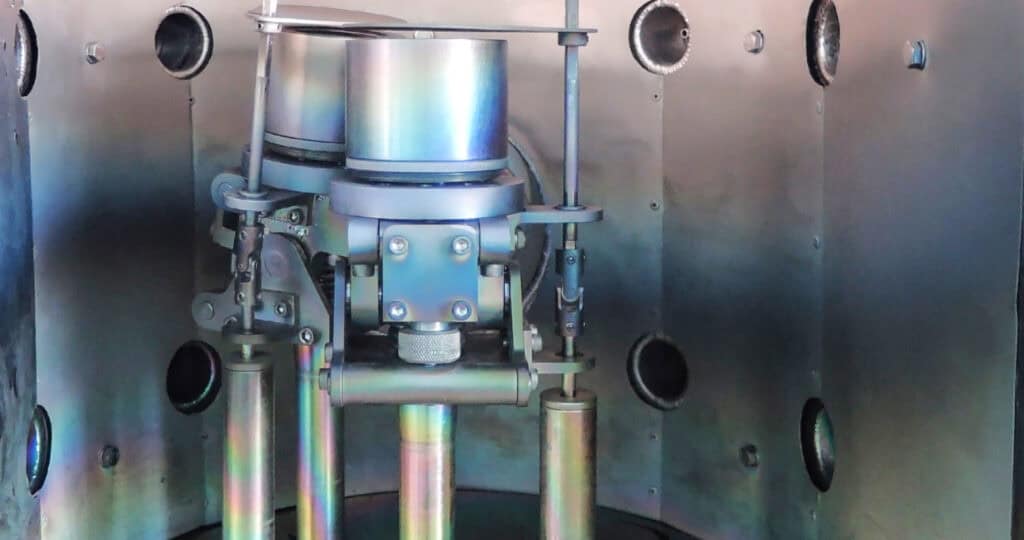
As a contract manufacturer of complex vacuum chambers for some of the world’s premier research institutions and high-tech industries, Keller Technology Corporation has considerable experience evaluating vacuum chamber designs. With the relentless pressure for companies to maintain or reduce costs, early consideration of design choices may help you to optimize your vacuum chamber design for both performance and cost-efficiency.
Below are 8 tips to help.
-
Design the Operating Envelope Thoughtfully
Whenever possible, provide extra volume around the exterior of the vacuum chamber. This simplifies the design of chamber mounts and equipment penetrations, reducing the need for custom-engineered solutions and complex assembly methods for peripheral equipment. These changes can lead to savings in both labor and material costs.
-
Use Standard HV and UHV Flanges & Off-the-Shelf Components
Incorporating standard HV and UHV flanges such as ISO-KF or ConFlat flanges eliminates the need for custom-machined seal features on your vacuum chamber, reducing fabrication costs and lead times. Additionally, using off-the-shelf components like pumps, viewports, and valves avoids custom fabrication, further cutting costs and accelerating production timelines.
-
Leverage Pressure Vessel Regulations
Starting with established pressure vessel standards provides a solid framework for vacuum chamber design, ensuring safety while avoiding unnecessary complexity. When you adhere to standard pressure vessel regulations, it streamlines design decisions and prevents excessive engineering work, reducing overall costs for your vacuum chamber design.
-
Choose Materials Based on Operating Conditions
Select materials for the vacuum chamber based on its operating parameters, such as pressure and temperature. This ensures you don’t overpay for high-cost materials that exceed performance needs, while still maintaining the vacuum chamber’s required functionality.
-
Simplify Welds and Joints
Reducing the number of welds and simplifying joints on your vacuum chamber designs can lead to faster production, fewer inspection points, and reduced rework. Simplified welds minimize labor and inspection costs while enhancing production efficiency.
-
Design for Manufacturability (DFM) & Ensure Accessibility for Manufacturing
Engage manufacturing engineers early in the design phase to ensure that the vacuum chamber is designed for easy and efficient manufacturing. This reduces the likelihood of costly design revisions and ensures optimal production workflows. Additionally, ensure the chamber design allows for easy access to internal joints for welding, preventing trapped volumes and delays during assembly.
-
Minimize Surface Finish Requirements
Avoid over-specifying surface finishes. Only call for high-grade finishes when absolutely necessary, as this reduces machining and polishing costs without compromising the chamber’s performance.
-
Optimize Port Layout
Thoughtfully plan the location of ports and flanges to simplify the integration of internal piping and fittings. An optimized port layout reduces material use, minimizes assembly complexity, and lowers the risk of leaks, leading to savings on both repairs and production.
Each decision in the design of a vacuum chamber can significantly impact the efficiency of the manufacturing process – whether it’s choosing the right materials, simplifying welds, or using standard components. If you are seeking a supplier of multiple, complex chambers and would benefit from expert guidance during the design phase, please contact Keller Technology.
